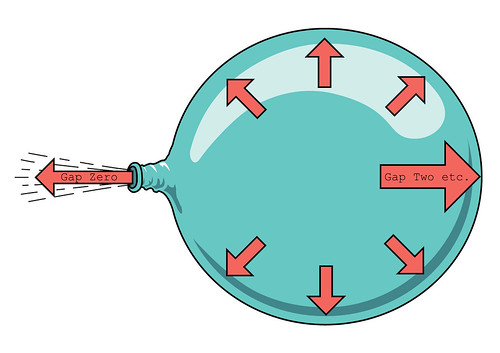The Cell Cycle: Gap Zero
May 23, 2015
The Cell Cycle is a series of articles on the mechanisms and substances that regulate cell growth. The contemporary cell climate is one of constant biological and cultural high pressure to grow, to proliferate, to expand and conquer. The Incredible Shrinking Man wants to investigate how to relax and reverse this climate.
There is actually a long period in the life of a cell when it doesn’t seem concerned with growing at all. We call this time the interphase, the ‘living’ phase of the cell in which it basically performs the functions it was designed for. At some point however, within this state of equilibrium, most cells will start to express the desire to duplicate. It starts to hamster nutrients, grows in size, reads its DNA, and eventually starts the process of mitosis. The cell reaches within itself, doubles up, and man has grown yet a little bit taller. The Incredible Shrinking Man beliefs most of the excess growth of the last 150 years has been unnecessary. It just adds weight and height but not health or functionality. If we look at the interphase in more detail it becomes apparent that even during its living phase the cell is already making all the necessary preparations for its division, and therefor exists within the growth paradigm. However for most cells there’s also a time, albeit much shorter, that nothing seems to happen at all. This period is called Gap Zero, and perhaps some possibilities towards relaxing our biologically programmed desire to grow ever taller can be found there. Cells enter the Gap Zero phase in response to a lack of growth factors or nutrients. During the phase, the cell cycle machinery is dismantled and cyclins and cyclin-dependent kinases disappear. Cells then remain in the Gap Zero phase until there is a reason for them to divide such as the repair of damaged tissue (good) or in response to that obsessive desire, expressed in a myriad of hormonal growth protagonists, to grow beyond what it good for us.